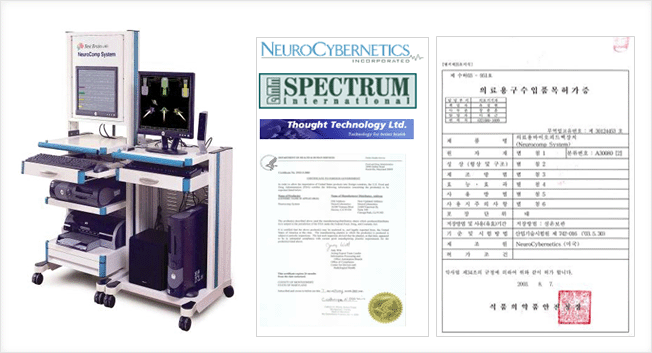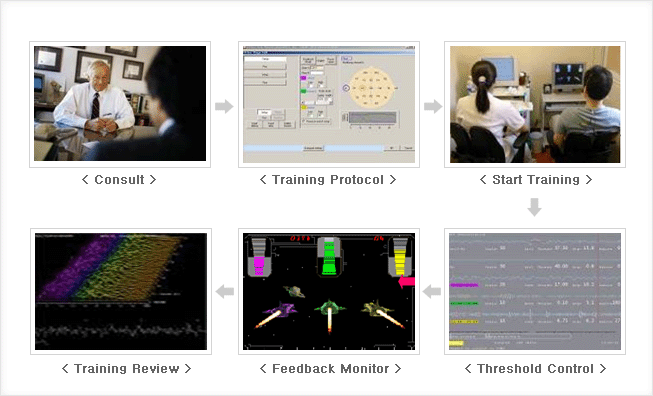Neurofeedback Literature: More than 300 papers, starting 1967
For more information for professionals or individuals interested in therapy, see our home page, EEG Spectrum Intl Inc

SMR Conditioning
1. Comparison of EEG correlates of reinforcement, internal inhibition and sleep. Roth, S.R., Sterman, M.B. and Clemente, C.D. ; Electroenceph. Clin. Neurophysiol., 23:509-520, 1967.
2. Instrumental conditioning of sensorimotor cortex EEG spindles in the waking cat. Wywricka, Wanda and Sterman, Maurice B. ; Physiol. Behav., 3:703-707, 1968.
3. Facilitation of spindle-burst sleep by conditioning of electroencephalographic activity while awake. Sterman ,M.B., Howe, R.D. and Macdonald, L.R.; Science, 167:1146-1148, 1970.

ADDICTION
1. Applicability of brain wave biofeedback to substance use disorder in adolescents.
Trudeau DL.
Child Adolesc Psychiatr Clin N Am. 2005 Jan;14(1):125-36, vii. Review.
2. Effects of neurotherapy on attention and impulsivity in crack cocaine addiction: A controlled, single-blind study. Burkett, V. Shannon; Cummins, John M.; Dickson, Robert M.; Journal of Neurotherapy, Vol 8(2), 2004. pp. 119-120.
3. Alpha-theta therapy in the treatment of a dually diagnosed patient: A case study.
Loytsker, Julia V.;
Dissertation Abstracts International: Section B: The Sciences & Engineering, Vol 62(11-B), Jun 2002. pp. 5381.
4. Neurofeedback in the treatment of addictive disorders.
Peniston, Eugene G.
Kulkosky, Paul J.; In: Introduction to quantitative EEG and neurofeedback. Evans, James R.; Abarbanel,
Andrew; San Diego, CA, US: Academic Press, Inc, 1999. pp. 157-179.
5. An investigation of neurofeedback training with alcoholics of Canadian Aboriginal ancestry.
Holden, William Bryne;
Dissertation Abstracts International Section A: Humanities & Social Sciences, Vol 58(10-A), Apr 1998. pp. 3846.
6. Native Americans, neurofeedback, and substance abuse theory:" Three year outcome of alpha/theta neurofeedback training in the treatment of problem drinking among Dine' (Navajo) people.
Kelley, Matthew J.;
Journal of Neurotherapy, Vol 2(3), Fal-Win 1997. pp. 24-60.
7. Alpha-theta brainwave neurofeedback training: an effective treatment for male and female alcoholics with depressive symptoms.
Saxby E, Peniston EG.
J Clin Psychol. 1995 Sep;51(5):685-93.
8. Sociocultural predictors of self-actualization in EEG-biofeedback-treated alcoholics.
Twemlow SW, Bowen WT.
Psychol Rep. 1977 Apr;40(2):591-8. No abstract available.

ADHD
1. Neurofeedback in Adolescents and Adults With Attention Deficit Hyperactivity Disorder.
Butnik, Steven M.;
Journal of Clinical Psychology, Vol 61(5), May 2005. pp. 621-625.
2. EEG Biofeedback treatment on ADHD Children with comorbid tic disorder.
Li, Li; Yu-Feng, Wang;
Chinese Mental Health Journal, Vol 19(4), Apr 2005. pp. 262-265
3. A Comparison of IVA-CPT and EEC Biofeedback on Diagnosis for Children with ADHD.
Tang, Yan-qing; Li, Yan-ling; Yang, Hua-bin;
Chinese Journal of Clinical Psychology, Vol 13(1), 2005. pp. 90, 94-95.
4. Electroencephalographic biofeedback in the treatment of attention-deficit/hyperactivity disorder.
Monastra VJ, Lynn S, Linden M, Lubar JF, Gruzelier J, LaVaque TJ.
Appl Psychophysiol Biofeedback. 2005 Jun;30(2):95-114.
5. Old and new controversies in the alternative treatment of attention-deficit hyperactivity disorder.
Rojas NL, Chan E.
Ment Retard Dev Disabil Res Rev. 2005;11(2):116-30.
6. Neurofeedback in adolescents and adults with attention deficit hyperactivity disorder.
Butnik SM
J Clin Psychol. 2005 May;61(5):621-5
7. ERPs correlates of EEG relative beta training in ADHD children.
Kropotov JD, Grin-Yatsenko VA, Ponomarev VA, Chutko LS, Yakovenko EA, Nikishena IS.
Int J Psychophysiol. 2005 Jan;55(1):23-34.
8. Electroencephalographic biofeedback (neurotherapy) as a treatment for attention deficit hyperactivity disorder: rationale and empirical foundation.
Monastra VJ.
Child Adolesc Psychiatr Clin N Am. 2005 Jan;14(1):55-82, vi. Review.
9. The Effectiveness of Neurofeedback and Stimulant Drugs in Treating AD/HD: Part II.
Replication. Rossiter, Thomas;
Applied Psychophysiology & Biofeedback, Vol 29(4), Dec 2004. pp. 233-243.
10. Neurofeedback Training with Virtual Reality for Inattention and Impulsiveness.
Cho, Baek-Hwan; Kim, Saebyul; Shin, Dong Ik;
CyberPsychology & Behavior, Vol 7(5), Oct 2004. pp. 519-526.
11. ADHD and drug therapy: Is it still a valid treatment?
Doggett Mark;
Journal of Child Health Care, Vol 8(1), Mar 2004. pp. 69-81.
12. EEG Biofeedback of low beta band components: Frequency-specific effects on variables of attention and event-related brain potentials.
Egner, T.; Gruzelier, J. H.;
Clinical Neurophysiology, Vol 115(1), Jan 2004. pp. 131-139.
13. Neurofeedback as a treatment for ADHD: A methodological review with implications for future research.
Vernon, David; Frick, Ann; Gruzelier, John;
Journal of Neurotherapy, Vol 8(2), 2004. pp. 53-82.
14. Hemoencephalography--A New Therapy for Attention Deficit Hyperactivity Disorder (ADHD): Case Report.
Mize, William;
Journal of Neurotherapy, Vol 8(3), 2004. pp. 77-97.
15. Attention training with ADHD children: Preliminary findings in a double-blind placebo- controlled study.
deBeus, Roger; Ball, J. D.; deBeus, Mary E.;
Journal of Neurotherapy, Vol 8(2), 2004. pp. 145-147.
16. The effectiveness of neurofeedback and stimulant drugs in treating AD/HD: part II. Replication.
Rossiter T.
Appl Psychophysiol Biofeedback. 2004 Dec;29(4):233-43.
17. Neurofeedback training with virtual reality for inattention and impulsiveness.
Cho BH, Kim S, Shin DI, Lee JH, Lee SM, Kim IY, Kim SI.
Cyberpsychol Behav. 2004 Oct;7(5):519-26
18. [Neurofeedback for the treatment of attention-deficit/hyperactivity disorder (ADHD) in childhood and adolescence]
Holtmann M, Stadler C, Leins U, Strehl U, Birbaumer N, Poustka F.
Z Kinder Jugendpsychiatr Psychother. 2004 Jul;32(3):187-200. Review. German.
19. The effectiveness of neurofeedback and stimulant drugs in treating AD/HD: Part I. Review of methodological issues.
Rossiter T.
Appl Psychophysiol Biofeedback. 2004 Jun;29(2):95-112. Review
20. Update on attention-deficit/hyperactivity disorder.
Daley KC.
Curr Opin Pediatr. 2004 Apr;16(2):217-26. Review.
21. EEG biofeedback of low beta band components: frequency-specific effects on variables of attention and event-related brain potentials.
Egner T, Gruzelier JH.
Clin Neurophysiol. 2004 Jan;115(1):131-9
22. Electroencephalographic (eeg) biofeedback treatment for children with attention deficit disorders in a school setting.
Mosse, Leah Kathryn;
Dissertation Abstracts International Section A: Humanities & Social Sciences, Vol 63(12-A), 2003. pp. 4233.
23. EEG biofeedback vs. placebo treatment for attention-deficit/hyperactivity disorder: a pilot study.
Heywood C, Beale I.
J Atten Disord. 2003 Sep;7(1):43-55.
24. Neurofeedback treatment for attention-deficit/hyperactivity disorder in children: a comparison with methylphenidate.
Fuchs T, Birbaumer N, Lutzenberger W, Gruzelier JH, Kaiser J.
Appl Psychophysiol Biofeedback. 2003 Mar;28(1):1-12.
25. An assessment of eeg biofeedback for the remediation of attention-deficit/hyperactivity disorder.
Heywood, Charles Edward;
Dissertation Abstracts International: Section B: The Sciences & Engineering, Vol 62(10-B), May 2002. pp. 4829.
26. Neurofeedback for AD/HD: A ratio feedback case study and tutorial.
Rossiter, Thomas;
Journal of Neurotherapy, Vol 6(3), 2002. pp. 9-35.
27. Clinical test for Attention Enhancement System.
Cho BH, Ku J, Jang D, Lee J, Oh M, Kim H, Lee J, Kim J, Kim I, Kim S.
Stud Health Technol Inform. 2002;85:89-95.
28. The effects of stimulant therapy, EEG biofeedback, and parenting style on the primary symptoms of attention-deficit/hyperactivity disorder.
Monastra VJ, Monastra DM, George S.
Appl Psychophysiol Biofeedback. 2002 Dec;27(4):231-49.
29. Alternative treatments for attention-deficit/hyperactivity disorder: does evidence support their use?
Brue AW, Oakland TD.
Altern Ther Health Med. 2002 Jan-Feb;8(1):68-70, 72-4. Review.
30. The effects of neurofeedback on intelligence and behavior of children with attention deficit disorders.
O'Dell, Brenda Dawn;
Dissertation Abstracts International: Section B: The Sciences & Engineering, Vol 62(2-B), Aug 2001. pp. 1093.
31. Effect of biofeedback training of sensorimotor and ?sub-1EEG rhythms on attention parameters.
Grin'-Yatsenko, V. A.; Kropotov, Yu. D.; Ponomarev, V. A.;
Human Physiology, Vol 27(3), May 2001. pp. 259-266.
32. Evaluation of the effectiveness of an attention enhancement program for children diagnosed with ADHD administered in the school setting.
Grisanzio, William Richard;
Dissertation Abstracts International: Section B: The Sciences & Engineering, Vol 61(9-B), Apr 2001. pp. 5043.
33. The efficacy of EEG neurofeedback in the treatment of ADHD children: A case study analysis.
Padolsky, Ilean Phyllis;
Dissertation Abstracts International: Section B: The Sciences & Engineering, Vol 61(12-B), 2001. pp. 6716.
34. ADHD and Stuttering: Similar EEG Profiles Suggest Neurotherapy as an Adjunct to Traditional Speech Therapies.
Ratcliff-Baird, Brenda;
Journal of Neurotherapy, Vol 5(4), 2001. pp. 5-22.
35. EEG biofeedback training and attention-deficit/hyperactivity disorder in an elementary school setting.
Carmody, Dennis P.; Radvanski, Diane C.; Wadhwani, Sonia;
Journal of Neurotherapy, Vol 4(3), 2001. pp. 5-27.
36. Neurofeedback Therapy of Attention Deficits in Patients with Traumatic Brain Injury.
Keller, Ingo;
Journal of Neurotherapy, Vol 5(1-2), 2001. pp. 19-32.
37. Attention and Neurofeedback Synchrony Training: Clinical Results and Their Significance.
McKnight, J. T.; Fehmi, L. G.;
Journal of Neurotherapy, Vol 5(1-2), 2001. pp. 45-61.
38. Learned self-regulation of EEG frequency components affects attention and event-related brain potentials in humans.
Egner T, Gruzelier JH.
Neuroreport. 2001 Dec 21;12(18):4155-9.
39. EEG biofeedback treatment of ADD. A viable alternative to traditional medical intervention?
Ramirez PM, Desantis D, Opler LA.
Ann N Y Acad Sci. 2001 Jun;931:342-58. Review.
40. Alternative treatments for adults with attention-deficit hyperactivity disorder (ADHD).
Arnold LE.
Ann N Y Acad Sci. 2001 Jun;931:310-41. Review.
41. EEG markers for attention deficit disorder: Pharmacological and neurofeedback applications.
Sterman, M. Barry;
Child Study Journal, Vol 30(1), 2000. pp. 1-23.
42. Efficacy of Barabasz's instant alert hypnosis in the treatment of ADHD with neurotherapy.
Anderson, Kathryn; Barabasz, Marianne; Barabasz, Arreed;
Child Study Journal, Vol 30(1), 2000. pp. 51-62.
43. Effect of neurofeedback on variables of attention in a large multi-center trial.
Kaiser, David A.; Othmer, Siegfried;
Journal of Neurotherapy, Vol 4(1), 2000. pp. 5-15.
44. Changes after EEG biofeedback and cognitive retraining in adults with mild traumatic brain injury and attention deficit hyperactivity disorder.
Tinius, Timothy P.; Tinius, Kathleen A.;
Journal of Neurotherapy, Vol 4(2), 2000. pp. 27-44.
45. Neurofeedback therapy for ADHD and related neurological disorders.
Schulenburg, Neil P.;
Journal of Neurotherapy, Vol 3(2), Spr 1999. pp. 10-20.
46. Neurofeedback assessment and treatment for attention deficit/hyperactivity disorders.
Lubar, Joel F.
Lubar, Judith O.; In: Introduction to quantitative EEG and neurofeedback. Evans, James R.; Abarbanel, Andrew;
San Diego, CA, US: Academic Press, Inc, 1999. pp. 103-143
47. Frequency band interaction in ADD/ADHD neurotherapy. Ramos, Franklin; Journal of Neurotherapy, Vol 3(1), Sum-Fal 1998. pp. 26-41.
48. Neurofeedback training in a case of attention deficit hyperactivity disorder.
Wadhwani, Sonia; Radvanski, Diane C.; Carmody, Dennis P.;
Journal of Neurotherapy, Vol 3(1), Sum-Fal 1998. pp. 42-49.
49. Patient-directed neurofeedback for AD/HD.
Rossiter, Thomas R.;
Journal of Neurotherapy, Vol 2(4), Spr 1998. pp. 54-63.
50. EEG biofeedback in the schools: The use of EEG biofeedback to treat ADHD in a school setting.
Boyd, William D.; Campbell, Susan E.;
Journal of Neurotherapy, Vol 2(4), Spr 1998. pp. 65-71
51. Neurofeedback combined with training in metacognitive strategies: effectiveness in students with ADD.
Thompson L, Thompson M.
Appl Psychophysiol Biofeedback. 1998 Dec;23(4):243-63.
52. Biofeedback as a treatment for Attention Deficit Hyperactivity Disorder.
Anderson, Judy Novak;
Dissertation Abstracts International: Section B: The Sciences & Engineering, Vol 58(5-B), Nov 1997. pp. 2663.
53. The practical aspects of diagnosing and managing children with attention deficit hyperactivity disorder.
Wolraich, Mark L.; Baumgaertel, Anna;
Clinical Pediatrics, Vol 36(9), Sep 1997. pp. 497-504.
54. EEG biofeedback training in a clinical sample of school age children treated for attention deficit hyperactivity disorder (neurofeedback).
Thorpe, Tamsen;
Dissertation Abstracts International: Section B: The Sciences & Engineering, Vol 58(3-B), Sep 1997. pp. 1550
55. Neocortical dynamics: implications for understanding the role of neurofeedback and related techniques for the enhancement of attention.
Lubar JF.
Appl Psychophysiol Biofeedback. 1997 Jun;22(2):111-26. Review
56. Attention-deficit hyperactivity disorder. Pharmacotherapy and beyond.
Tan G, Schneider SC.
Postgrad Med. 1997 May;101(5):201-4, 213-4, 216 passim. Review.
57. EEG biofeedback for the enhancement of attentional processing in normal college students.
Rasey, Howard W.; Lubar, Joel F.; McIntyre, Anne;
Journal of Neurotherapy, Vol 1(3), Win 1996. pp. 15-21.
58. Event related potential of subgroups of children with attention deficit hyperactivity disorder and the implications for EEG biofeedback.
Linden, Michael; Gevirtz, Richard; Isenhart, Robert;
Journal of Neurotherapy, Vol 1(3), Win 1996. pp. 40-49.
59. Event related potentials of subgroups of children with attention deficit hyperactivity disorder and the implications for EEG biofeedback.
Linden, Michael; Gervitz, Richard; Isenhart, Robert;
Journal of Neurotherapy, Vol 1(4), Spr-Sum 1996. pp. 1-11.
60. Computer-assisted cognitive training for ADHD: A case study.
Kotwal, Dilnavaz B.; Burns, William J.; Montgomery, Doil D.;
Behavior Modification, Vol 20(1), Jan 1996. pp. 85-96.
61. EEG biofeedback and the remediation of ADHD symptomatology: A controlled treatment outcome study.
Cartozzo, Henry Anthony;
Dissertation Abstracts International Section A: Humanities & Social Sciences, Vol 56(5-A), Nov 1995. pp. 1706.
62. EEG biofeedback: A new treatment option for ADD/ADHD.
Alhambra, Marabella A.; Fowler, Timothy P.; Alhambra, Antonio A.;
Journal of Neurotherapy, Vol 1(2), Fal 1995. pp. 39-43.
63. A comparison of EEG biofeedback and psychostimulants in treating attention deficit/ hyperactivity disorders.
Rossiter, Thomas R.; La Vaque, Theodore J.;
Journal of Neurotherapy, Vol 1(1), Sum 1995. pp. 48-59.
64. Differences in baseline EEG measures for ADD and normally achieving preadolescent males.
Janzen, Troy; Graap, Ken; Stephanson, Stephan;
Biofeedback & Self Regulation, Vol 20(1), Mar 1995. pp. 65-82.
65. The effects of neurofeedback training with background music on EEG patterns of ADD and ADHD children.
Pratt, Rosalie Rebollo; Abel, Hans-Henning; Skidmore, Jon;
International Journal of Arts Medicine, Vol 4(1), Spr 1995. pp. 24-31.
66. Neurofeedback for the management of attention-deficit/hyperactivity disorders.
Lubar, Joel F.
In: Biofeedback: A practitioner's guide (2nd ed.). Schwartz, Mark S.; New York, NY, US: Guilford Press, 1995. pp. 493-522.
67. Evaluation of the effectiveness of EEG neurofeedback training for ADHD in a clinical setting as measured by changes in T.O.V.A. scores, behavioral ratings, and WISC-R performance.
Lubar JF, Swartwood MO, Swartwood JN, O'Donnell PH.
Biofeedback Self Regul. 1995 Mar;20(1):83-99.
68. Ten-year stability of EEG biofeedback results for a hyperactive boy who failed fourth grade perceptually impaired class.
Tansey MA.
Biofeedback Self Regul. 1993 Mar;18(1):33-44.
69. Discourse on the development of EEG diagnostics and biofeedback for attention-deficit/ hyperactivity disorders.
Lubar JF.
Biofeedback Self Regul. 1991 Sep;16(3):201-25. Review.
70. Biofeedback assisted attention training: Open Focus?Workshop.
Fehmi, Les;
Psychotherapy in Private Practice, Vol 5(1), Spr 1987. pp. 47-49.
71. Electroencephalographic biofeedback of SMR and beta for treatment of attention deficit disorders in a clinical setting.
Lubar JO, Lubar JF.
Biofeedback Self Regul. 1984 Mar;9(1):1-23.
72. EMG and EEG biofeedback training in the treatment of a 10-year-old hyperactive boy with a developmental reading disorder.
Tansey MA, Bruner RL.
Biofeedback Self Regul. 1983 Mar;8(1):25-37.
73. The effects of EEG biofeedback training on the behavior of hyperactive children.
Parziale, Jeffrey L.;
Dissertation Abstracts International, Vol 43(3-B), Sep 1982. pp. 881-882
74. A comparison of two feedback encephalography training programs (with self-regulation strategies) upon selected physiological, psychological, and motor performance correlates of arousal and attention.
Matteson, J. Harold;
Dissertation Abstracts International, Vol 42(6-B), Dec 1981. pp. 2590-2591
75. EEG and behavioral changes in a hyperkinetic child concurrent with training of the sensorimotor rhythm (SMR): a preliminary report.
Lubar JF, Shouse MN.
Biofeedback Self Regul. 1976 Sep;1(3):293-306.

ANXIETY DISORDERS
1. Neurofeedback with anxiety and affective disorders.
Hammond DC.
Child Adolesc Psychiatr Clin N Am. 2005 Jan;14(1):105-23, vii. Review.
2. A review of EEG biofeedback treatment of anxiety disorders.
Moore NC.
Clin Electroencephalogr. 2000 Jan;31(1):1-6. Review.
3. The efficacy of alpha and theta neurofeedback training in treatment of generalized anxiety disorder.
Vanathy, S.; Sharma, P. S. V. N.; Kumar, K. B.;
Indian Journal of Clinical Psychology, Vol 25(2), Sep 1998. pp. 136-143.
4.
Biofeedback as a placebo: Anxiety reduction facilitated by training in either suppression or enhancement of alpha brainwaves.
Plotkin, William B.; Rice, Kathleen M.;
Journal of Consulting & Clinical Psychology, Vol 49(4), Aug 1981. pp. 590-596.

AUTISM
1. Effects of electroencephalogram biofeedback with Asperger's syndrome.
Scolnick B.
Int J Rehabil Res. 2005 Jun;28(2):159-63.
2. Efficacy of Neurofeedback for Children in the Autistic Spectrum: A Pilot Study.
Jarusiewicz, Betty;
Journal of Neurotherapy, Vol 6(4), 2002. pp. 39-49

AUTOIMMUNE DISORDERS
1. EEG biofeedback in the treatment of Lyme disease: A case study.
Packard, Russell C.; Ham, Lesley P.;
Journal of Neurotherapy, Vol 1(3), Win 1996. pp. 22-31.

CHRONIC FATIGUE SYNDROME
1. Treatment of chronic fatigue with neurofeedback and self-hypnosis.
Hammond DC.
NeuroRehabilitation. 2001;16(4):295-300.
2. EEG biofeedback as a treatment for chronic fatigue syndrome: a controlled case report.
James LC, Folen RA.
Behav Med. 1996 Summer;22(2):77-81

CONDUCT DISORDER
1. Abnormal QEEG patterns associated with dissociation and violence.
Evans, James R.; Claycomb, Suzanne;
Journal of Neurotherapy, Vol 3(2), Spr 1999. pp. 21-27.
2. Quantitative EEG findings among men convicted of murder.
Evans, James R.; Park, Nan- Sook;
Journal of Neurotherapy, Vol 2(2), Spr-Sum 1997. pp. 31-39.
3. EEG Biofeedback Training for Attention Deficit Disorder, Specific Learning Disabilities, and Associated Conduct Problems
Siegfried Othmer, Susan F. Othmer, & Clifford S. Marks September 1991
4. Composite biofeedback conditioning and dangerous offenders: III.
Quirk, Douglas A. Journal of Neurotherapy, 1995 Fal, v1 (n2):44-54.

EPILEPSY
1. Neurofeedback treatment of epilepsy.
Walker JE, Kozlowski GP.
Child Adolesc Psychiatr Clin N Am. 2005 Jan;14(1):163-76, viii. Review
2. Neurofeedback and epilepsy.
Monderer RS, Harrison DM, Haut SR.
Epilepsy Behav. 2002 Jun;3(3):214-218.
3. Negative potential shifts and the prediction of the outcome of neurofeedback therapy in epilepsy.
Kotchoubey B, Strehl U, Holzapfel S, Blankenhorn V, Froscher W, Birbaumer N.
Clin Neurophysiol. 1999 Apr;110(4):683-6.
4. A meta-analysis of psychological treatments for epilepsy.
Yesu, Daniel;
Dissertation Abstracts International: Section B: The Sciences & Engineering, Vol 59(4-B), Oct 1998. pp. 1873.
5. Neurofeedback treatment of pseudoseizure disorder.
Swingle PG.
Biol Psychiatry. 1998 Dec 1;44(11):1196-9.
6. Effectiveness of psychological interventions for people with poorly controlled epilepsy.
Goldstein, Laura H.;
Journal of Neurology, Neurosurgery & Psychiatry, Vol 63(2), Aug 1997. pp. 137-142
7.
Neurotherapy and drug therapy in combination for adult ADHD, personality disorder, and seizure disorder: A case report.
Hansen, Lisa M.; Trudeau, David L.; Grace, Dixie L.;
Journal of Neurotherapy, Vol 2(1), Fal-Win 1996. pp. 6-14.
8. Predictive factors for controlling seizures using a behavioural approach.
Andrews DJ, Schonfeld WH.
Seizure. 1992 Jun;1(2):111-6.
9.
Evocation and inhibition of seizures: Behavioral treatment.
Fenwick, Peter
In: Neurobehavioral problems in epilepsy. Smith, Dennis B.; Treiman, David M.; New York, NY, England: Raven Press, Publishers, 1991. pp. 163-183.
10. EEG biofeedback and relaxation training in the control of epileptic seizures.
Tozzo CA, Elfner LF, May JG Jr.
Int J Psychophysiol. 1988 Aug;6(3):185-94.
11. Neuropsychological aspects of complex partial seizures: Diagnostic and treatment issues.
Bennett, Thomas L.;
International Journal of Clinical Neuropsychology, Vol 9(1), 1987. pp. 37-45.
12. Eight to twelve Hertz occipital EEG training with moderate and severely retarded epileptic individuals.
Rudrud, Eric H.;
Dissertation Abstracts International, Vol 39(5-B), Nov 1978. pp. 2546.
13. Electroencephalographic biofeedback methodology and the management of epilepsy.
Lubar, Joel F.;
Pavlovian Journal of Biological Science, Vol 12(3), Jul-Sep 1977. pp. 147-185.
14. Operant conditioning of epileptic neurons in monkeys and its theoretical application to EEG operant conditioning in humans.
Wyler AR.
Pavlov J Biol Sci. 1977 Jul-Sep;12(3):130-46.
15. Behavioral management of epileptic seizures following EEG biofeedback training of the sensorimotor rhythm.
Lubar JF, Bahler WW.
Biofeedback Self Regul. 1976 Mar;1(1):77-104.
16. Reduction of seizures in refractory epileptic patients through EEG biofeedback training.
Seifert, Alvin R.;
Dissertation Abstracts International, Vol 36(3-B), Sep 1975. pp. 1481.
17. Reduction of epileptic seizures through EEG biofeedback training.
Seifert AR, Lubar JF.
Biol Psychol. 1975 Nov;3(3):157-84.
18. Biofeedback in epileptics: equivocal relationship of reinforced EEG frequency to seizure reduction.
Kaplan BJ.
Epilepsia. 1975 Sep;16(3):477-85.
19. Phased biofeedback approach for epileptic seizure control.
Johnson, Richard K.; Meyer, Robert G.;
Journal of Behavior Therapy & Experimental Psychiatry, Vol 5(2), Sep 1974. pp. 185-187.
20. EEG biofeedback and epilepsy.
Kaplan, Bonnie J.;
Dissertation Abstracts International, Vol 35(2-B), Aug 1974. pp. 1082.
21. Neurophysiologic and clinical studies of sensorimotor EEG biofeedback training: some effects on epilepsy.
Sterman MB.
Seminars in Psychiatry

LEARNING DISABILITIES
1. Electroencephalogram biofeedback for reading disability and traumatic brain injury.
Thornton KE, Carmody DP.
Child Adolesc Psychiatr Clin N Am. 2005 Jan;14(1):137-62, vii. Review.
2. Neurofeedback for elementary students with identified learning problems.
Orlando, Peter C.; Rivera, Richard O.;
Journal of Neurotherapy, Vol 8(2), 2004. pp. 5-19
3. EEG and behavioral changes following neurofeedback treatment in learning disabled children.
Fernandez T, Herrera W, Harmony T, Diaz-Comas L, Santiago E, Sanchez L, Bosch J, Fernandez-Bouzas A, Otero G, Ricardo-Garcell J, Barraza C, Aubert E, Galan L, Valdes R.
Clin Electroencephalogr. 2003 Jul;34(3):145-52.
4. Visual-motor integration and its relation to EEG neurofeedback brain wave patterns, reading, spelling, and arithmetic achievement in attention deficit disordered and learning disabled students.
Fenger, T. Nick;
Journal of Neurotherapy, Vol 3(1), Sum-Fal 1998. pp. 9-18.
5. A controlled study of the effects of EEG biofeedback on cognition and behavior of children with attention deficit disorder and learning disabilities": Erratum.
Linden, Michael; Habib, Thomas; Radojevic, Vesna;
Biofeedback & Self Regulation, Vol 21(3), Sep 1996. pp. 297.
6. EEG Beta and Theta training with learning disabled children: Variables associated with individual responsivity.
Schnoll, Ellen Rae;
Dissertation Abstracts International: Section B: The Sciences & Engineering, Vol 56(8-B), Feb 1996. pp. 4592.
7. A controlled study of the effects of EEG biofeedback on cognition and behavior of children with attention deficit disorder and learning disabilities.
Linden M, Habib T, Radojevic V.
Biofeedback Self Regul. 1996 Mar;21(1):35-49. Erratum in: 1996 Sep;21(3):297.
8. Wechsler (WISC--R) changes following treatment of learning disabilities via EEG biofeedback training in a private practice setting.
Tansey, Michael A.;
Australian Journal of Psychology, Vol 43(3), Dec 1991. pp. 147-153.
9. An investigation of the remediation of learning disabilities utilizing EEG biofeedback as measured by neuropsychological and psychoeducational tests, and EEG spectral analysis.
Bell, Corinne R.;
Dissertation Abstracts International, Vol 46(9-B), Mar 1986. pp. 3235-3236.
10. EEG biofeedback and learning disabilities.
Lubar, Joel F.;
Theory Into Practice, Vol 24(2), Spr 1985. pp. 106-111.
11. EEG sensorimotor rhythm biofeedback training: some effects on the neurologic precursors of learning disabilities.
Tansey MA.
Int J Psychophysiol. 1984 Feb;1(2):163-77.
12. The effects of bilateral EEG biofeedback on verbal, visual-spatial, and creative skills in learning disabled male adolescents.
Cunningham MD, Murphy PJ.
J Learn Disabil. 1981 Apr;14(4):204-8. No abstract available.
13. An investigation of relationships between an enhanced theta brainwave condition and visually presented paired associate learning.
Mapes, Joseph L.;
Dissertation Abstracts International, Vol 38(5-B), Nov 1977. pp. 2418.

MIGRAINE
1. The efficacy of neurofeedback on migrainous neuralgia.
Walcutt, Diana L.;
Dissertation Abstracts International: Section B: The Sciences & Engineering, Vol 62(1-B), Jul 2001. pp. 568.
2. EEG biofeedback for post-traumatic headache and cognitive dysfunction: A pilot study.
Packard, Russell C.; Ham, Lesley P.;
Headache Quarterly, Vol 8(4), 1997. pp. 348-352.

MIGRAINE
1. An alternative treatment for depression using EEG biofeedback to alter frontal alpha asymmetry and improve mood.
Nazarian, Maria;
Dissertation Abstracts International: Section B: The Sciences & Engineering, Vol 65(9-B), 2005. pp. 4842.
2. The effects of alpha/theta neurofeedback on personality and mood.
Raymond J, Varney C, Parkinson LA, Gruzelier JH.
Brain Res Cogn Brain Res. 2005 May;23(2-3):287-92.
3. Clinical use of an alpha asymmetry neurofeedback protocol in the treatment of mood disorders: Follow-up study one to five years post therapy.
Baehr, Elsa; Rosenfeld, J. Peter; Baehr, Rufus;
Journal of Neurotherapy, Vol 4(4), 2001. pp. 11-18
4. Neurofeedback treatment of depression with the Roshi.
Hammond, D. Corydon;
Journal of Neurotherapy, Vol 4(2), 2000. pp. 45-56.
5. An EEG biofeedback protocol for affective disorders.
Rosenfeld JP.
Clin Electroencephalogr. 2000 Jan;31(1):7-12. Review. No abstract available.
6. Single case study of EEG asymmetry biofeedback for depression: An independent replication in an adolescent.
Earnest, Carolyn;
Journal of Neurotherapy, Vol 3(2), Spr 1999. pp. 28-35.
7. Clinical use of an alpha asymmetry neurofeedback protocol in the treatment of mood disorders.
Baehr, Elsa
Rosenfeld, J. Peter; Baehr, Rufus; In: Introduction to quantitative EEG and neurofeedback. Evans, James R.; Abarbanel, Andrew; San Diego, CA, US: Academic Press, Inc, 1999. pp. 181-201.
8. The clinical use of an alpha asymmetry protocol in the neurofeedback treatment of depression: Two case studies.
Baehr, Elsa; Rosenfeld, J. P.; Baehr, Rufus;
Journal of Neurotherapy, Vol 2(3), Fal-Win 1997. pp. 10-23.

OTHER
1. Preface: Emerging Interventions.
Hirshberg, Laurence M.; Chiu, Sufen; Frazier, Jean A.;
Child & Adolescent Psychiatric Clinics of North America, Vol 14(1), Jan 2005. pp. xiii-xvii.
2. Changing Brainwaves in Psychological Practice.
Masterpasqua, Frank;
PsycCRITIQUES, Vol 50 (26), 2005. pp. [np].
3. Unconscious operant conditioning in the paradigm of brain-computer interface based on color perception.
Kaplan AY, Lim JJ, Jin KS, Park BW, Byeon JG, Tarasova SU.
Int J Neurosci. 2005 Jun;115(6):781-802.
4. Clinical database development: characterization of EEG phenotypes.
Johnstone J, Gunkelman J, Lunt J.
Clin EEG Neurosci. 2005 Apr;36(2):99-107.
5. Biofeedback and dance performance: a preliminary investigation.
Raymond J, Sajid I, Parkinson LA, Gruzelier JH.
Appl Psychophysiol Biofeedback. 2005 Mar;30(1):64-73.
6. Increasing individual upper alpha power by neurofeedback improves cognitive performance in human subjects.
Hanslmayr S, Sauseng P, Doppelmayr M, Schabus M, Klimesch W.
Appl Psychophysiol Biofeedback. 2005 Mar;30(1):1-10.
7. Stress reactivity and family relationships in the development and treatment of endometriosis.
Harrison V, Rowan K, Mathias J.
Fertil Steril. 2005 Apr;83(4):857-64. Review
8. [Effects of neurofeedback-based EEG alpha and EEG beta training in patients with chronically decompensated tinnitus]
Schenk S, Lamm K, Gundel H, Ladwig KH.
HNO. 2005 Jan;53(1):29-37. German.
9. Critical validation studies of neurofeedback.
Gruzelier J, Egner T.
Child Adolesc Psychiatr Clin N Am. 2005 Jan;14(1):83-104, vi. Review
10. Emerging brain-based interventions for children and adolescents: overview and clinical perspective.
Hirshberg LM, Chiu S, Frazier JA.
Child Adolesc Psychiatr Clin N Am. 2005 Jan;14(1):1-19, v. Review.
11. Introduction to white paper series--Guest Editorial.
Moss, Donald; LaVaque, Theodore J.; Hammond, D. Corydon;
Applied Psychophysiology & Biofeedback, Vol 29(3), Sep 2004. pp. 151-152.
12. Mapping of Changes in EEG Spectrum Power during a Session of Biofeedback Training of the ?sub-1 Rhythm.
Nikishena, I. S.; Ponomarev, V. A.; Grin'-Yatsenko, V. A.;
Human Physiology, Vol 30(4), Jul- Aug 2004. pp. 392-396
13. Ideology and the stagnation of AODA treatment modalities in America.
Quinn, James F.; Bodenhamer- Davis, Eugenia; Koch, D. Shane;
Deviant Behavior, Vol 25(2), Mar-Apr 2004. pp. 109-131.
14. Post initial neurofeedback experience of functional adults: A qualitative study.
Parker, Jan F.;
Dissertation Abstracts International: Section B: The Sciences & Engineering, Vol 65(4-B), 2004. pp. 1772.
15. The effects of electroencephalographic biofeedback treatment on trichotillomania: A single-case experiment.
Van Zile, Nancy Jeanne;
Dissertation Abstracts International: Section B: The Sciences & Engineering, Vol 64(9-B), 2004. pp. 4602
16. A proactive position on qEEG in neurotherapy.
Trudeau, David L.;
Journal of Neurotherapy, Vol 8(1), 2004. pp. 1-4.
17. Introduction: Blood Flow Hemoencephalography.
Tinius, Tim;
Journal of Neurotherapy, Vol 8(3), 2004. pp. 1-3.
18. Standards for the use of Quantitative Electroencephalography (QEEG) in neurofeedback: A position paper of the international society for neuronal regulation.
Hammond, D. Corydon; Walker, Jonathan; Hoffman, Daniel;
Journal of Neurotherapy, Vol 8(1), 2004. pp. 5-27.
19. Changes in frontal brain asymmetry associated with premenstrual dysphoric disorder: A single case study.
Baehr, Elsa; Miller, Laura; Rosenfeld, J. Peter;
Journal of Neurotherapy, Vol 8(1), 2004. pp. 29- 42.
20. The temporal dynamics of electroencephalographic responses to alpha/theta neurofeedback training in healthy subjects.
Egner, Tobias; Gruzelier, John H.;
Journal of Neurotherapy, Vol 8(1), 2004. pp. 43-5.
21. Exploring Hemispheric Differences in Infrared Brain Emissions.
Freides, David; Aberbach, Lisa;
Journal of Neurotherapy, Vol 8(3), 2004. pp. 53-61.
22. Effects of Hemoencephalographic (HEG) Training at Three Prefrontal Locations Upon EEC Ratios at Cz.
Sherrill, Robert Jr.;
Journal of Neurotherapy, Vol 8(3), 2004. pp. 63-76.
23. Clinical corner.
Hammond, D. Corydon;
Journal of Neurotherapy, Vol 8(2), 2004. pp. 91.
24. Neurofeedback for cerebral palsy.
Ayers, Margaret E.;
Journal of Neurotherapy, Vol 8(2), 2004. pp. 93- 94.
25. Neurofeedback with cerebral palsy and mental retardation: A case report.
Bachers, Alan;
Journal of Neurotherapy, Vol 8(2), 2004. pp. 95-96.
26. A neurologist's advice for mental health professionals on the use of QEEG and neurofeedback.
Walker, Jonathan;
Journal of Neurotherapy, Vol 8(2), 2004. pp. 97-103.
27. Increasing individual upper alpha power by neurofeedback improves cognitive performance.
Hanslmayr, Simon;
Journal of Neurotherapy, Vol 8(2), 2004. pp. 110-111.
28. Combined effects of neurofeedback and pulsed electromagnetic fields.
Lappin, Martha S.;
Journal of Neurotherapy, Vol 8(2), 2004. pp. 123-124.
29. Combining ROSHI and BrainMaster: Three case studies.
Martin, George;
Journal of Neurotherapy, Vol 8(2), 2004. pp. 124-125
30. QEEG guided rTMS.
Padgitt, Steven T.;
Journal of Neurotherapy, Vol 8(2), 2004. pp. 125- 126
31. The effects of neurofeedback on hemispheric specialization and on cognition.
Barnea, Anat;
Journal of Neurotherapy, Vol 8(2), 2004. pp. 131-132.
32. Extended follow-up of Peniston protocol results with chemical dependency.
Bodenhamer- Davis, Eugenia; Callaway, Tonya;
Journal of Neurotherapy, Vol 8(2), 2004. pp. 135-136.
33. Exploring measures of change in neurofeedback: Is there value in auto and cross correlations, first derivatives and correlation dimension?
Brown V
Journal of Neurotherapy, Vol 8(2), 2004. pp. 137-138.
34. Treatment effects related to EEG-biofeedback for crack cocaine dependency in a faith-based homeless mission.
Burkett, V. Shannon; Cummins, John M.; Dickson, Robert M.;
Journal of Neurotherapy, Vol 8(2), 2004. pp. 138-140
35. Tomographic neurofeedback: A new technique for the self-regulation of brain electrical activity.
Congedo, Marco; Lubar, Joel; Joffe, David;
Journal of Neurotherapy, Vol 8(2), 2004. pp. 141-142.
36. Brain-Behavior Relationships: Normalizing the Anomalous.
Tansey, Michael A.
PsycCRITIQUES, 2004. pp. [np].
37. Low-resolution electromagnetic tomography neurofeedback.
Congedo M, Lubar JF, Joffe D.
IEEE Trans Neural Syst Rehabil Eng. 2004 Dec;12(4):387-97.
38. The effects of neurofeedback training on the spectral topography of the electroencephalogram.
Egner T, Zech TF, Gruzelier JH.
Clin Neurophysiol. 2004 Nov;115(11):2452-60.
39. Biofeedback treatment for asthma.
Lehrer PM, Vaschillo E, Vaschillo B, Lu SE, Scardella A, Siddique M, Habib RH.
Chest. 2004 Aug;126(2):352-61.
40. An EEG-driven brain-computer interface combined with functional magnetic resonance imaging (fMRI).
Hinterberger T, Weiskopf N, Veit R, Wilhelm B, Betta E, Birbaumer N.
IEEE Trans Biomed Eng. 2004 Jun;51(6):971-4.
41. Principles of a brain-computer interface (BCI) based on real-time functional magnetic resonance imaging (fMRI).
Weiskopf N, Mathiak K, Bock SW, Scharnowski F, Veit R, Grodd W, Goebel R, Birbaumer N.
IEEE Trans Biomed Eng. 2004 Jun;51(6):966-70.
42. Neurofeedback in Psychological Practice.
Masterpasqua, Frank; Healey, Kathryn N.;
Professional Psychology: Research & Practice, Vol 34(6), Dec 2003. pp. 652-65
43. Mood changes after self-hypnosis and Johrei prior to exams.
Laidlaw, Tannis M.; Naito, Akira; Dwivedi, Prabudha;
Contemporary Hypnosis, Vol 20(1), 2003. pp. 25-40.
44. An examination of the efficacy of EEG Biofeedback on the treatment of essential hypertension: A presentation and implementation of a comprehensive protocol for treating the disorder.
Peterson, Dana Timothy;
Dissertation Abstracts International: Section B: The Sciences & Engineering, Vol 64(1-B), 2003. pp. 428.
45. Peak alpha frequency: An electroencephalographic measure of cognitive preparedness.
Angelakis, Efthymios;
Dissertation Abstracts International: Section B: The Sciences & Engineering, Vol 64(3-B), 2003. pp. 1538.
46. QEEG-guided neurofeedback in the treatment of obsessive compulsive disorder.
Hammond, D. Corydon;
Journal of Neurotherapy, Vol 7(2), 2003. pp. 25-52.
47. Databases or specific training protocols for neurotherapy? A proposal for a "clinical approach to neurotherapy.
" Romano-Micha, Jaime;
Journal of Neurotherapy, Vol 7(3-4), 2003. Special issue: Quantitative electroencephalographic analysis (QEEG) databases for neurotherapy: Description, validation, and application. pp. 69-85.
48. The effects of caffeine on the brain: A review.
Hammond, D. Corydon;
Journal of Neurotherapy, Vol 7(2), 2003. pp. 79-89.
49. The impact of self-hypnosis and Johrei on lymphocyte subpopulations at exam time: a controlled study.
Naito A, Laidlaw TM, Henderson DC, Farahani L, Dwivedi P, Gruzelier JH.
Brain Res Bull. 2003 Dec 30;62(3):241-53.
50. Real-time independent component analysis of fMRI time-series.
Esposito F, Seifritz E, Formisano E, Morrone R, Scarabino T, Tedeschi G, Cirillo S, Goebel R, Di Salle F.
Neuroimage. 2003 Dec;20(4):2209-24.
51. Neurofeedback training for a patient with thalamic and cortical infarctions.
Bearden TS, Cassisi JE, Pineda M.
Appl Psychophysiol Biofeedback. 2003 Sep;28(3):241-53.
52. Ecological validity of neurofeedback: modulation of slow wave EEG enhances musical performance.
Egner T, Gruzelier JH.
Neuroreport. 2003 Jul 1;14(9):1221-4.
53. Clinical application of an EEG-based brain-computer interface: a case study in a patient with severe motor impairment.
Neuper C, Muller GR, Kubler A, Birbaumer N, Pfurtscheller G.
Clin Neurophysiol. 2003 Mar;114(3):399-409.
54. The effect of training distinct neurofeedback protocols on aspects of cognitive performance.
Vernon D, Egner T, Cooper N, Compton T, Neilands C, Sheri A, Gruzelier J.
Int J Psychophysiol. 2003 Jan;47(1):75-85.
55. Task force report on methodology and empirically supported treatments: Introduction.
Moss, Donald; Gunkelman, Jay;
Applied Psychophysiology & Biofeedback, Vol 27(4), Dec 2002. pp. 271-272
56. EEG biofeedback on cognitive function of children with ADHD.
Jiang, Ronghuan; Wang, Yufeng; Gu, Bomei;
Chinese Mental Health Journal, Vol 16(6), Jun 2002. pp. 407-410.
57. The effects of EEG neurofeedback and neuro-cognitive processing in the educational environment of an arts-based private elementary/middle school.
Delong, Lise Deandre;
Dissertation Abstracts International: Section B: The Sciences & Engineering, Vol 63(6-B), Jan 2002. pp. 3033.
58. Mechanism(s) of the placebo response and the future of neurofeedback research.
La Vaque, T. J.;
Journal of Neurotherapy, Vol 6(1), 2002. pp. 1-4.
59. Neurofeedback Training: Integration with Diet and Detoxification Programs.
Ibric, Victoria L.; McCourt, James E.;
Journal of Neurotherapy, Vol 6(4), 2002. pp. 25-38.
60. Impact of qEEG-guided coherence training for patients with a mild closed head injury.
Walker, Jonathan E.; Norman, Charles A.; Weber, Ronald K.;
Journal of Neurotherapy, Vol 6(2), 2002. pp. 31-43.
61. Application of repetitive visual stimulation to EEG neurofeedback protocols.
Collura, Thomas F.;
Journal of Neurotherapy, Vol 6(2), 2002. pp. 47-70.
62. Biofeedback for Movement Disorders (Dystonia with Parkinson's Disease): Theory and Preliminary Results.
Thompson, Michael; Thompson, Lynda;
Journal of Neurotherapy, Vol 6(4), 2002. pp. 51-70.
63. Behaviorism and neurofeedback: Still married.
Fultz, Dwight E.;
Journal of Neurotherapy, Vol 6(3), 2002. pp. 67-74.
64. Are There Indications or Contradictions in Using and Doing Neurofeedback Under Task Conditions?
Hammond D Corydon;
Journal of Neurotherapy, Vol 6(4), 2002. pp. 89-95.
65. The alpha rhythm EEG.
Hammond, D. Corydon;
Journal of Neurotherapy, Vol 6(3), 2002. pp. 89-100.
66. Neurofeedback and quantitative electroencephalography.
Weiler EW, Brill K, Tachiki KH, Schneider D.
Int Tinnitus J. 2002;8(2):87-93.
67. The circle of the soul: the role of spirituality in health care.
Moss D.
Appl Psychophysiol Biofeedback. 2002 Dec;27(4):283-97. Review.
68. EEG signature and phenomenology of alpha/theta neurofeedback training versus mock feedback.
Egner T, Strawson E, Gruzelier JH.
Appl Psychophysiol Biofeedback. 2002 Dec;27(4):261-70.
69. On the pathophysiology of migraine--links for "empirically based treatment" with neurofeedback.
Kropp P, Siniatchkin M, Gerber WD.
Appl Psychophysiol Biofeedback. 2002 Sep;27(3):203-13. Review.
70. Functional MRI for neurofeedback: feasibility study on a hand motor task.
Yoo SS, Jolesz FA.
Neuroreport. 2002 Aug 7;13(11):1377-81.
71. The improvement/rehabilitation of auditory memory functioning with EEG biofeedback.
Thornton KE.
NeuroRehabilitation. 2002;17(1):69-80.
72. A Janusian perspective on the nature, development and structure of schizophrenia and schizotypy.
Gruzelier J.
Schizophr Res. 2002 Mar 1;54(1-2):95-103
73. Treatment of fibromyalgia incorporating EEG-driven stimulation: A clinical outcomes study.
Mueller, Horst H.; Donaldson, C. C. Stuart; Nelson, David V.;
Journal of Clinical Psychology, Vol 57(7), Jul 2001. pp. 933-952.
74. Ethical research issues: Going beyond the Declaration of Helsinki.
Striefel, Sebastian;
Applied Psychophysiology & Biofeedback, Vol 26(1), Mar 2001. pp. 39-59.
75. Applied Research Using Alpha/Theta Training for Enhancing Creativity and Well- Being.
Boynton, Tracy;
Journal of Neurotherapy, Vol 5(1-2), 2001. pp. 5-18.
76. Optimal Functioning Training with EEG Biofeedback for Clinical Populations: A Case Study.
Mason, Linda A.; Brownback, Thomas S.;
Journal of Neurotherapy, Vol 5(1-2), 2001. pp. 33-43.
77. Changes in Lateralized Memory Performance in Subjects with Epilepsy Following Neurofeedback Training.
Sterman, M. B.; Lantz, DeLee;
Journal of Neurotherapy, Vol 5(1-2), 2001. pp. 63-72.
78. Agitation therapy for antisocial and psychopathic personalities: an outline.
Martens WH.
Am J Psychother. 2001;55(2):234-50
79. The ethical use of placebo controls in clinical research: the Declaration of Helsinki.
La Vaque TJ, Rossiter T.
Appl Psychophysiol Biofeedback. 2001 Mar;26(1):23-37; discussion 61-5.
80. [Neurofeedback in therapy of tinnitus]
Gosepath K, Nafe B, Ziegler E, Mann WJ.
HNO. 2001 Jan;49(1):29-35. German
81. The effects of EEG biofeedback on hypnagogia, creativity, and well-being.
Boynton, Tracy B.;
Dissertation Abstracts International: Section B: The Sciences & Engineering, Vol 61(4- B), Oct 2000. pp. 2264.
82. Implementation of virtual reality in EEG biofeedback.
Othmer, Siegfried; Kaiser, David;
CyberPsychology & Behavior, Vol 3(3), Jun 2000. pp. 415-420.
83. An investigation of the reliability and validity of theta/beta ratio measurement.
Ohlund, Barbara Jo;
Dissertation Abstracts International Section A: Humanities & Social Sciences, Vol 61(6-A), Jan 2000. pp. 2255.
84.The effects of brief, eyes-open alpha brain wave training with audio and video relaxation induction on the EEG of 77 army reservists.
Putman, John;
Journal of Neurotherapy, Vol 4(1), 2000. pp. 17-28.
85. Comparison of alpha-theta, alpha and EMG neurofeedback in the production of alpha- theta crossover and the occurrence of visualizations.
Moore, John P.; Trudeau, David L.; Thuras, Paul D.;
Journal of Neurotherapy, Vol 4(1), 2000. pp. 29-42.
86. The role of aspirational ethics and licensing laws in the practice of neurofeedback.
Stiefel, Sebastian;
Journal of Neurotherapy, Vol 4(1), 2000. pp. 43-55.
87. Verification study on the focused technology F1000.
Barnes, T.; Hamilton, R.; Reed, S.;
Journal of Neurotherapy, Vol 4(2), 2000. pp. 105-107
88. Response to verification study.
Deits, Frank;
Journal of Neurotherapy, Vol 4(2), 2000. pp. 109.
89. Improvement/rehabilitation of memory functioning with neurotherapy/QEEG biofeedback.
Thornton K.
J Head Trauma Rehabil. 2000 Dec;15(6):1285-96.
90. Neurofeedback--the significance of reinforcement and the search for an appropriate strategy for the success of self-regulation.
Siniatchkin M, Kropp P, Gerber WD.
Appl Psychophysiol Biofeedback. 2000 Sep;25(3):167-75
91. The state of EEG biofeedback therapy (EEG operant conditioning) in 2000: an editor's opinion.
Duffy FH.
Clin Electroencephalogr. 2000 Jan;31(1):V-VII. No abstract available.
92. An assessment of the effects of multi-session audio-visual stimulation on cognitive measures and the cortical eeg.
Timmermann, Deanna Lee;
Dissertation Abstracts International: Section B: The Sciences & Engineering, Vol 60(3-B), Sep 1999. pp. 1343.
93. Electroencephalographic events during the wisconsin card sorting test.
Debeus, Mary Elizabeth;
Dissertation Abstracts International: Section B: The Sciences & Engineering, Vol 59(7-B), Jan 1999. pp. 3675.
94. An overview of quantitative EEG and its applications to neurofeedback.
Cantor, David S.
In: Introduction to quantitative EEG and neurofeedback. Evans, James R.; Abarbanel, Andrew; San Diego, CA, US: Academic Press, Inc, 1999. pp. 3-27.
95. EEG database-guided neurotherapy.
Thatcher, Robert W.
In: Introduction to quantitative EEG and neurofeedback. Evans, James R.; Abarbanel, Andrew; San Diego, CA, US: Academic Press, Inc, 1999. pp. 29-64.
96. From EEG to neurofeedback.
Budzyndski, Thomas H.
In: Introduction to quantitative EEG and neurofeedback. Evans, James R.; Abarbanel, Andrew; San Diego, CA, US: Academic Press, Inc, 1999. pp. 65-79.
97. Medical applications of neurobiofeedback.
Laibow, Rima
In: Introduction to quantitative EEG and neurofeedback. Evans, James R.; Abarbanel, Andrew; San Diego, CA, US: Academic Press, Inc, 1999. pp. 83-102.
98. Neurotherapy in the treatment of dissociation.
Brownback, Thomas
Mason, Linda; In: Introduction to quantitative EEG and neurofeedback. Evans, James R.; Abarbanel, Andrew; San Diego, CA, US: Academic Press, Inc, 1999. pp. 145-156
99. Performance enhancement training through neurofeedback.
Norris, S. Louise
Currieri, Michael; In: Introduction to quantitative EEG and neurofeedback. Evans, James R.; Abarbanel, Andrew; San Diego, CA, US: Academic Press, Inc, 1999. pp. 223-240.
100. EEG biofeedback: An emerging model for its global efficacy.
Othmer, Siegfried
Othmer, Susan F.; Kaiser, David A.; In: Introduction to quantitative EEG and neurofeedback. Evans, James R.; Abarbanel, Andrew; San Diego, CA, US: Academic Press, Inc, 1999. pp. 243-310.
101. The neural underpinnings of neurofeedback training.
Arbarbanel, Andrew
In: Introduction to quantitative EEG and neurofeedback. Evans, James R.; Abarbanel, Andrew; San Diego, CA, US: Academic Press, Inc, 1999. pp. 311-340.
102. Theories of the effectiveness of alpha-theta training for multiple disorders.
White, Nancy E.
In: Introduction to quantitative EEG and neurofeedback. Evans, James R.; Abarbanel, Andrew; San Diego, CA, US: Academic Press, Inc, 1999. pp. 341-367.
103. Ethical, legal, and professional pitfalls associated with neurofeedback services.
Striefel, Sebastian
In: Introduction to quantitative EEG and neurofeedback. Evans, James R.; Abarbanel, Andrew; San Diego, CA, US: Academic Press, Inc, 1999. pp. 371-399.
104. Julia's analysis.
Miller, Jill M.
In: Learning disabilities and psychic conflict: A psychoanalytic casebook. Rothstein, Arden Aibel; Glenn, Jules; Madison, CT, US: International Universities Press, Inc, 1999. pp. 129-161
105. Brain wave states and hypnotherapy.
Baddeley, Mark;
Australian Journal of Clinical Hypnotherapy & Hypnosis, Vol 20(2), Sep 1999. pp. 108-111
106. Regarding the database for the Peniston alpha-theta EEG biofeedback protocol": Comment.
Peniston, Eugene G.;
Applied Psychophysiology & Biofeedback, Vol 23(4), Dec 1998. pp. 273-275.
107. Nested systems: Evolving models of embodied psychotherapy.
Cabral, Tobias Francisco;
Dissertation Abstracts International: Section B: The Sciences & Engineering, Vol 59(2-B), Aug 1998. pp. 0866.
108. Normative EEG databases and EEG biofeedback.
Thatcher, Robert W.;
Journal of Neurotherapy, Vol 2(4), Spr 1998. pp. 8-39.
109. Treatment of dissociative identity disorder with neurotherapy and group self- exploration.
Manchester, Carol F.; Allen, Tom; Tachiki, Ken H.;
Journal of Neurotherapy, Vol 2(4), Spr 1998. pp. 40-52.
110. [GOFI--a neurofeedback system for child and adolescent psychiatry]
Heinrich H, Nelson K, Moll GH, Rothenberger A.
Biomed Tech (Berl). 1998;43(3):67-71. German. No abstract available.
111. Frontal interhemispheric asymmetry: self regulation and individual differences in humans.
Hardman E, Gruzelier J, Cheesman K, Jones C, Liddiard D, Schleichert H, Birbaumer N.
Neurosci Lett. 1997 Jan 17;221(2-3):117-20.
112. Preliminary evidence that daily changes in frontal alpha asymmetry correlate with changes in affect in therapy sessions.
Rosenfeld JP, Baehr E, Baehr R, Gotlib IH, Ranganath C.
Int J Psychophysiol. 1996 Aug-Sep;23(1-2):137-41.
113. A quantitative/qualitative study to test the efficacy of electroencephalographic entrainment feedback.
Cook, Cheryl Faulkner;
Dissertation Abstracts International: Section B: The Sciences & Engineering, Vol 56(5-B), Nov 1995. pp. 2926.
114. Correction of neuropsychic deadaptation by means of functional EEG biofeedback control.
Soroko, S. I.; Musuraliev, T. Zh.; Komarover, I. N.;
Human Physiology, Vol 21(6), Nov-Dec 1995. pp. 537-545.
115. Mathematically derived frequency correlates in cerebral function: Theoretical and clinical implications for neurofeedback training.
Sams, Marvin W.;
Journal of Neurotherapy, Vol 1(2), Fal 1995. pp. 1-14.
116. Gates, states, rhythms, and resonances: The scientific basis of neurofeedback training.
Abarbanel, Andrew;
Journal of Neurotherapy, Vol 1(2), Fal 1995. pp. 15-38.
117. Neurofeedback and Lyme's disease: A clinical application of the Five Phase Model of CNS Functional Transformation and integration.
Brown, Valdeane W.;
Journal of Neurotherapy, Vol 1(2), Fal 1995. pp. 60-73.
118. Neurofeedback: One instrument in the orchestra.
Norris, S. Louise;
Journal of Neurotherapy, Vol 1(2), Fal 1995. pp. 74-76.
119. Positive outcome with neurofeedback treatment in a case of mild autism.
Sichel, Arthur G.; Fehmi, Lester G.; Goldstein, David M.;
Journal of Neurotherapy, Vol 1(1), Sum 1995. pp. 60-64.
120. Human EEG, behavioral stillness and biofeedback.
Mulholland, Thomas;
International Journal of Psychophysiology, Vol 19(3), Apr 1995. pp. 263-279.
121. [Correction of neuro-psychic maladjustment disorders using functional EEG biofeedback]
Soroko SI, Musuraliev TZh, Komarover IN.
Fiziol Cheloveka. 1995 Nov-Dec;21(6):14-28. Russian. No abstract available.
122. Some nontraditional (unconventional and/or innovative) psychosocial treatments for children and adolescents: critique and proposed screening principles.
Arnold LE.
J Abnorm Child Psychol. 1995 Feb;23(1):125-40. Review.
123. Electroencephalographic cartography of conscious states.
Tansey, Michael A.; Tansey, Jennifer A.; Tachiki, Ken H.;
International Journal of Neuroscience, Vol 77(1-2), Jul 1994. pp. 89-98.
124. Learning disabled children: The effects of neurofeedback training on brain efficiency.
Packard, F. Bruce;
Dissertation Abstracts International Section A: Humanities & Social Sciences, Vol 55(4-A), 1994. pp. 913.
125. Asthmatic extrathoracic upper airway obstruction: laryngeal dyskinesis.
Nahmias J, Tansey M, Karetzky MS.
N J Med. 1994 Sep;91(9):616-20.
126. Controversial treatments for children with ADHD and impulse disorders.
Goldstein, Sam
Ingersoll, Barbara; In: Handbook of childhood impulse disorders and ADHD: Theory and practice. Koziol, Leonard F.; Stout, Chris E.; Springfield, IL, England: Charles C Thomas, Publisher, 1993. pp. 144-160.
127. Effects of thermal and EEG biofeedback on brainwave synchrony.
Venneman, John A.;
Medical Psychotherapy: An International Journal, Vol 4, 1991. pp. 61-.
128. The influence of electrocortical biofeedback on performance in pre-elite archers.
Landers DM, Petruzzello SJ, Salazar W, Crews DJ, Kubitz KA, Gannon TL, Han M.
Med Sci Sports Exerc. 1991 Jan;23(1):123-9.
129. Righting the rhythms of reason: EEG biofeedback training as a therapeutic modality in a clinical office setting.
Tansey, Michael A.;
Medical Psychotherapy: An International Journal, Vol 3, 1990. pp. 57-68.
130. Electroencephalographic biofeedback and neurological applications.
Lubar, Joel F.
In: Biofeedback: Principles and practice for clinicians (3rd ed.). Basmajian, John V.; Baltimore, MD, US: Williams & Wilkins Co, 1989. pp. 67-90.
131. Equipment needs for psychotherapists.
Peffer, Kirk E.
In: Biofeedback: Principles and practice for clinicians (3rd ed.). Basmajian, John V.; Baltimore, MD, US: Williams & Wilkins Co, 1989. pp. 337-345.
132. The effects of electrode placement upon EEG biofeedback training: The monopolar)ipolar controversy.
Fehmi, Lester G.; Sundor, Adam;
International Journal of Psychosomatics, Vol 36(1-4), 1989. Special issue: Biofeedback and diagnostic techniques. pp. 23-33
133. The effects of electrode placement upon EEG biofeedback training: the monopolar-bipolar controversy.
Fehmi LG, Sundor A.
Int J Psychosom. 1989;36(1-4):23-33.
134. A brief review of research and controversies in EEG biofeedback and meditation.
Echenhofer, Frank G.; Coombs, Mary M.;
Journal of Transpersonal Psychology, Vol 19(2), 1987. pp. 161-171.
135. Can subjects be trained to communicate through the use of EEG biofeedback?
Elder S; Thomas; Lashley, Joyce K.; Kedouri, Nela;
Clinical Biofeedback & Health: An International Journal, Vol 9(1), Spr-Sum 1986. pp. 42-47.
136. The effect of synchronized, multichannel EEG biofeedback and "Open Focus" Training upon the performance of selected psychomotor tasks.
Gillette, Donna L.;
Dissertation Abstracts International, Vol 44(3-B), Sep 1983. pp. 910.
137. Biological rhythms in arousal indices: a potential confounding effect in EEG biofeedback.
Gertz J, Lavie P.
Psychophysiology. 1983 Nov;20(6):690-5. No abstract available.
138. Amyotrophic lateral sclerosis: A challenge for biofeedback.
Elder, S. Thomas; Lashley, Joyce K.; Steck, Charles G.;
American Journal of Clinical Biofeedback, Vol 5(2), Fal- Win 1982. pp. 123-125.
139. EEG sensorimotor biofeedback training and the treatment of a six-year-old asthmatic child.
Tansey, Michael A.;
American Journal of Clinical Biofeedback, Vol 5(2), Fal-Win 1982. pp. 145-149.
140. Occipital alpha training in mentally retarded adolescents.
Thorson, Gary; Lipscomb, Thomas J.;
Mental Retardation, Vol 20(1), Feb 1982. pp. 30-32.
141. Facilitation of performance on an arithmetic task as a result of the application of a biofeedback procedure to suppress alpha wave activity.
Jackson GM, Eberly DA.
Biofeedback Self Regul. 1982 Jun;7(2):211-21
142. Biofeedback: A possible substitute for smoking.
Griffith, Earl E.;
Dissertation Abstracts International, Vol 42(6-B), Dec 1981. pp. 2527-2528.
143. Role of feedback in adaptive control of pathological brain electrical activity.
Vereshchagina, A. A.; Kaidanova, E. A.;
Human Physiology, Vol 7(4), Jul-Aug 1981. pp. 241-246.
144. EEG biofeedback: physiological behavior modification.
Sterman MB.
Neurosci Biobehav Rev. 1981 Fall;5(3):405-12.
145. Maintenance and generalization of 40-Hz EEG biofeedback effects.
Ford M, Bird BL, Newton FA, Sheer D.
Biofeedback Self Regul. 1980 Jun;5(2):193-205.
146. Multi-channel EEG computer analysis from biofeedback epochs: A tool for studying the brain.
Stramler, James H.;
Dissertation Abstracts International, Vol 39(8-B), Feb 1979. pp. 4094.
147. Correlates of alpha, beta and theta wave production.
Watson CG, Jacobs L, Herder J.
J Clin Psychol. 1979 Apr;35(2):364-9.
148. Automated EEG signal-detection methodologies for biofeedback conditioning.
Lubar, Joel F.; Culver, Renee M.;
Behavior Research Methods & Instrumentation, Vol 10(5), Oct 1978. pp. 607-616.
149. Anxiety, self-concept, and personality correlates of cognitively-enhanced low activation EEG biofeedback training.
Hausman, Roberta B.;
Dissertation Abstracts International, Vol 39(1-A), Jul 1978. pp. 195.
150. Operant conditioning of alpha rhythm: The effects of EEG biofeedback and instruction on alpha enhancement, discrimination, and subjective experience.
Wong, Kwan-hung;
Dissertation Abstracts International, Vol 39(1-B), Jul 1978. pp. 423.
151. Behavioral and electroencephalographic correlates of 40-Hz EEG biofeedback training in humans.
Bird BL, Newton FA, Sheer DE, Ford M.
Biofeedback Self Regul. 1978 Mar;3(1):13-28.
152. Facilitation of performance on an arithmetic task with the mentally retarded as a result of the application of a biofeedback procedure to decrease alpha wave activity.
Jackson, Gary M.;
Dissertation Abstracts International, Vol 38(2-B), Aug 1977. pp. 933
153. Effect of contingent and noncontingent feedback and subject expectancies on electoencephalogram biofeedback training.
Pressner, Joseph A.; Savitsky, Jeffrey C.;
Journal of Consulting & Clinical Psychology, Vol 45(4), Aug 1977. pp. 713-714.
154. Personality and attitudinal correlates of ability to increase alpha production in EEG biofeedback training.
Zirkel, Kip; Stewart, Robert A.; Preston, Charles;
Psychologia: An International Journal of Psychology in the Orient, Vol 20(2), Jun 1977. pp. 107-110.
155. Bilateral EEG biofeedback and creativity.
Whisenant, William F.;
Dissertation Abstracts International, Vol 37(9-B), Mar 1977. pp. 4659.
156. Contingent and noncontingent feedback, expectancies, and their effects in EEG biofeedback training.
Pressner, Joseph A.;
Dissertation Abstracts International, Vol 37(8- B), Feb 1977. pp. 4162.
157. The role of CNS arousal levels in the management of hyperkinesis: Methylphenidate and EEG biofeedback training.
Shouse, Margaret N.;
Dissertation Abstracts International, Vol 37(8-B), Feb 1977. pp. 4206-4207.
158. EEG biofeedback and its effects on psychological functioning.
Levi, Alexander H.;
Dissertation Abstracts International, Vol 36(7-B), Jan 1976. pp. 3614.
159. Biofeedback: New therapeutic approach to psychosomatics.
Friedman, H.;
Feuillets Psychiatriques de Li?e, Vol 9(2), 1976. pp. 178-190.
160. Biofeedback and meditation in the treatment of psychiatric illnesses.
Glueck, Bernard C.; Stroebel, Charles F.;
Comprehensive Psychiatry, Vol 16(4), Jul-Aug 1975. pp. 303-321.
161. Brainwaves and biofeedback: A brief history.
Implications for music research. Wagner, Michael J.;
Journal of Music Therapy, Vol 12(2), Sum 1975. pp. 46-58.
162. Modulator and filter circuits for EEG biofeedback.
Helmer, R. J.;
Behavior Research Methods & Instrumentation, Vol 7(1), Jan 1975. pp. 15-18.
163. [Neurophysiology of hypnosis. The suggestive process and contributions of the learned control of brain waves]
Pinelli P.
Minerva Med. 1975 Oct 31;66(73):3835-43. Italian.
164. Auto-regulation of EEG alpha wave production as a function of the direction of conjugate lateral eye movements.
Selzer, Fern A.;
Dissertation Abstracts International, Vol 34(12-B, Pt 1), Jun 1974. pp. 6250.
165. Strobe trigger, compound alpha filter, and phase coherence detector for EEG biofeedback.
Rouse, Larry O.
Behavior Research Methods & Instrumentation, Vol. 6(3), May 1974. pp. 335-337.
166. Autogenic training and EEG biofeedback training in coronary heart disease.
Weber ES.
J Med Soc N J. 1974 Dec;71(12):927-31. No abstract available.
167. Case study of trigeminal neuralgia using neurofeedback and peripheral biofeedback.
Sime, Andrea;
Journal of Neurotherapy, Vol 8(1), 2004. pp. 59-71.
168. Self-regulation of chronic pain: Preliminary empirical findings.
Hartman, Lorne M.; Ainsworth, Kenneth D.;
Canadian Journal of Psychiatry, Vol 25(1), Feb 1980. pp. 38- 43.
169. Relief of phantom limb pain after EMG biofeedback-assisted relaxation: A case report.
Dougherty, John;
Behaviour Research & Therapy, Vol 18(4), 1980. pp. 355-357.

PTSD
1. Tinnitus perception and distress is related to abnormal spontaneous brain activity as measured by magnetoencephalography.
Weisz N, Moratti S, Meinzer M, Dohrmann K, Elbert T.
PLoS Med. 2005 Jun;2(6):e153. Epub 2005 Jun 28.
2. The effects of Performance Enhancement Training on hypertension, human attention, stress, and brain wave patterns: A case study.
Norris, S. Louise; Lee, Ching-Tse; Burshteyn, Dmitry;
Journal of Neurotherapy, Vol 4(3), 2001. pp. 29-44.
3. Behavior change following affect shift: A model for the treatment of stress disorders.
Sheppard, John L.;
In: Stress and health: Research and clinical applications. Kenny, Dianna T.; Carlson, John G.; Amsterdam, Netherlands: Harwood Academic Publishers, 2000. pp. 195-222.
4. Biodesensitization: biofeedback-controlled systematic desensitization of the stress response to infant crying.
Tyson PD.
Biofeedback Self Regul. 1996 Sep;21(3):273-90.
5. Perceptual responses to infant crying after EEG biofeedback assisted stress management training: implications for physical child abuse.
Tyson PD, Sobschak KB.
Child Abuse Negl. 1994 Nov;18(11):933-43.
6. Alpha-theta brainwave neuro-feedback therapy for Vietnam veterans with combat-related post-traumatic stress disorder.
Peniston, Eugene G.; Kulkosky, Paul J.;
Medical Psychotherapy: An International Journal, Vol 4, 1991. pp. 47-60.

STROKE
1. EEG Biofeedback on a Female Stroke Patient with Depression: A Case Study.
Putman, John A.;
Journal of Neurotherapy, Vol 5(3), 2001. pp. 27-38.
2. Effect of neurofeedback on motor recovery of a patient with brain injury: a case study and its implications for stroke rehabilitation.
Wing K.
Top Stroke Rehabil. 2001 Autumn;8(3):45-53.
3. Assessing and treating open head trauma, coma, and stroke using real-time digital EEG neurofeedback.
Ayers, Margaret E.
In: Introduction to quantitative EEG and neurofeedback. Evans, James R.; Abarbanel, Andrew; San Diego, CA, US: Academic Press, Inc, 1999. pp. 203-222.
4. Neurotherapy for stroke rehabilitation: a single case study.
Rozelle GR, Budzynski TH.
Biofeedback Self Regul. 1995 Sep;20(3):211-28.

TRAUMATIC BRAIN INJURY
1. EEG-NeuroBioFeedback treatment of patients with brain injury Part 3: Cardiac parameters and finger temperature changes associated with rehabilitation.
Laibow, Rima E.; Stubblebine, Albert N.; Sandground, Henry;
Journal of Neurotherapy, Vol 6(1), 2002. pp. 5-21.
2. EEG-NeuroBioFeedback treatment of patients with brain injury Part 4: Duration of treatments as a function of both the initial load of clinical symptoms and the rate of rehabilitation.
Bounais, Michel; Laibow, Rima E.; Stubblebine, Albert N.;
Journal of Neurotherapy, Vol 6(1), 2002. pp. 23-38.
3. EEG operant conditioning (biofeedback) and traumatic brain injury.
Thatcher RW.
Clin Electroencephalogr. 2000 Jan;31(1):38-44. Review.
4. Neurofeedback in closed head injury: A multiple case design study.
Salerno, John A.;
Dissertation Abstracts International: Section B: The Sciences & Engineering, Vol 57(11- B), May 1997. pp. 7266.
5. The effects of EEG biofeedback on vigilance in adults following mild traumatic brain injury.
Hamilton, Paul Martin;
Dissertation Abstracts International: Section B: The Sciences & Engineering, Vol 57(9-B), Mar 1997. pp. 5969.
6. Diagnosis and treatment of head injury.
Hoffman, Daniel A.; Stockdale, Steven; Hicks, Lana L.;
Journal of Neurotherapy, Vol 1(1), Sum 1995. pp. 14-21.
7. Neurofeedback therapy for a mild head injury.
Byers, Alvah P.;
Journal of Neurotherapy, Vol 1(1), Sum 1995. pp. 22-37.

TOURETT
1.
A simple and a complex tic (Gilles de la Tourette's syndrome): their response to EEG sensorimotor rhythm biofeedback training.
Tansey MA.
Int J Psychophysiol. 1986 Jul;4(2):91-7. ?

SLEEP DISORDER
1. Vigilance, sleep and epilepsy.
Vieth J.
Eur Neurol. 1986;25 Suppl 2:128-33.
2. A double-blind investigation of the relationship between seizure activity and the sleep EEG following EEG biofeedback training.
Whitsett SF, Lubar JF, Holder GS, Pamplin WE, Shabsin HS.
Biofeedback Self Regul. 1982 Jun;7(2):193-209.
3. The treatment of psychophysiologic insomnia with biofeedback: a replication study.
Hauri PJ, Percy L, Hellekson C, Hartmann E, Russ D
Biofeedback & Self-Regulation 7 (2): 223-235 (Jun 1982)
4. Treating psychophysiologic insomnia with biofeedback.
Hauri P
Arch Gen Psychiatry 38 (7): 752-758 (Jul 1981)

Slow Cortical Potential Neurofeedback
1. Birbaumer, N., Elbert, T., Canavan, A. G. M., & Rockstroh, B. (1990). Slow potentials of the cerebral cortex and behavior. Physiological Reviews, 70, 1-41.
2. Birbaumer, N., Roberts, L. E., Lutzenberger, W., Rockstroh, B., & Elbert, T. (1992). Area-specific self-regulation of slow cortical potentials on the saggital midline and its effects on behavior. Electroencephalography & Clinical Neurophysiology, 84 353-361.
3. Elbert, T. (1980). Biofeedback of slow cortical potentials. Part I. Journal of Electroencephalography & Clinical Neurophysiology, 48, 293-301.
4. Elbert, T., Lutzenberger, W., Rockstroh, B., & Birbaumer, N. (1983). When regulation of slow brain potentials fails BA contribution to the psychophysiology of perceptual aberration and anhedonia. Advances in Biological Psychiatry, 13, 98-106.
5. Kotchoubey, B., Schleichert, H., Lutzenberger, W., & Birbaumer, N. (1997). A new method for self-regulation of slow cortical potentials in a timed paradigm. Applied Psychophysiology & Biofeedback, 22(2), 77-93.
6. Roberts, L. E., Birbaumer, N., Rockstroh, B., Lutzenberger, W., & Elbert, T. (1989). Self-report during feedback regulation of slow cortical potentials. Psychophysiology, 26(4), 392-403.
7. Rockstroh, B. (1987). Operant control of slow brain potentials. Chapter in J. N. Hengtgen, D. Hellhammer, & G. Huppmann (Eds.), Advanced Methods in Psychobiology. C. H. Hogrefe, pp. 179-190
8. Rockstroh, B., Birbaumer, N., Elbert, T., & Lutzenberger, W. (1984). Operant control of spontaneous EEG, evoked potentials and slow potentials of the brain. Biofeedback & Self-Regulation, 9(2), 139-160.
9. Rockstroh, B., Elbert, T., Lutzenberger, W., & Birbaumer, N. (1982). The effects of slow cortical potentials on response speed. Psychophysiology, 19, 211-217.
10. Siniatchkin, M., Kropp, P., & Gerber, W-D. (2000). Neurofeedback The significance of reinforcement and the search for an appropriate strategy for the success of self-regulation. Applied Psychophysiology & Biofeedback, 25(3), 167-175.

Slow Cortical Potential Neurofeedback
1. PMS, EEG, and Photic Stimulation David Noton, Ph.D. (1997). Journal of Neurotherapy, 2(2), 1997
For more information for professionals or individuals interested in therapy, see our home page, EEG Spectrum Intl Inc
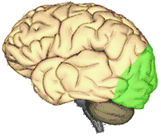
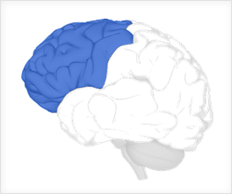 집중력을 유지하는데 중요한 곳은 좌측 뇌의 전두엽입니다. 뉴로피드백으로 좌측 전두엽을 I5-18Hz 훈련을 하게 되면 집중력이 개선될 수 있습니다.
집중력을 유지하는데 중요한 곳은 좌측 뇌의 전두엽입니다. 뉴로피드백으로 좌측 전두엽을 I5-18Hz 훈련을 하게 되면 집중력이 개선될 수 있습니다.
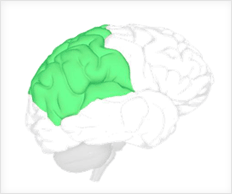 선택적 집중력이란 필요한 상황에만 초점을 맞추어 집중을 유지하고 주변에서의 불필요한 소음에 주의가 흐트러지는 것을 막아주는 기능입니다. 두뇌의 우측 두정엽이 이 기능을 담당합니다. 우측 두정엽을 12-15Hz 훈련을 하게 되면 기능이 개선될 수 있습니다.
선택적 집중력이란 필요한 상황에만 초점을 맞추어 집중을 유지하고 주변에서의 불필요한 소음에 주의가 흐트러지는 것을 막아주는 기능입니다. 두뇌의 우측 두정엽이 이 기능을 담당합니다. 우측 두정엽을 12-15Hz 훈련을 하게 되면 기능이 개선될 수 있습니다.
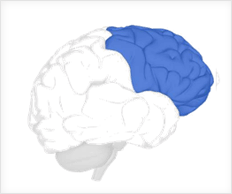 이러한 억제 기능은 주로 우측 전두엽에서 담당을 합니다.
이러한 억제 기능은 주로 우측 전두엽에서 담당을 합니다.
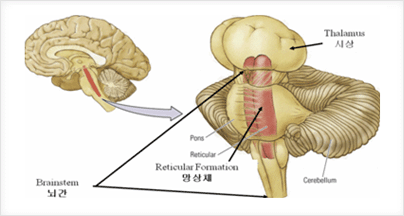 중뇌, 뇌교, 연수로 이루어진 뇌관은 아민성 신경로부터의 신경화학물질의 분비와 자율신경 및 인체 항상성 기능 조절의 중심부입니다. 뇌간은 뇌에서 가장 복잡한 부분으로 수많은 작은 핵들이 있으면 상,하행신경로가 통과하는 곳입니다.
중뇌, 뇌교, 연수로 이루어진 뇌관은 아민성 신경로부터의 신경화학물질의 분비와 자율신경 및 인체 항상성 기능 조절의 중심부입니다. 뇌간은 뇌에서 가장 복잡한 부분으로 수많은 작은 핵들이 있으면 상,하행신경로가 통과하는 곳입니다.

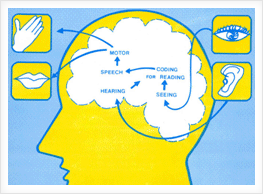
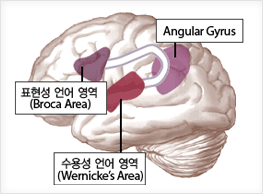


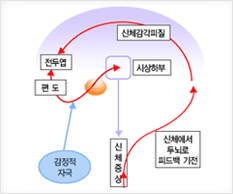 불안/부정적 기억을 담당하는 기저핵(Basal Ganglia)과 편도(Amygdale)의 흥분성을 감소시켜 자율신경의 항진을 막아주고 전두엽의 이성적 판단 기능을 강화시키면 스포츠, 예술 공연, 시험 불안 등을 감소시켜 줄 수 있습니다.
불안/부정적 기억을 담당하는 기저핵(Basal Ganglia)과 편도(Amygdale)의 흥분성을 감소시켜 자율신경의 항진을 막아주고 전두엽의 이성적 판단 기능을 강화시키면 스포츠, 예술 공연, 시험 불안 등을 감소시켜 줄 수 있습니다.
